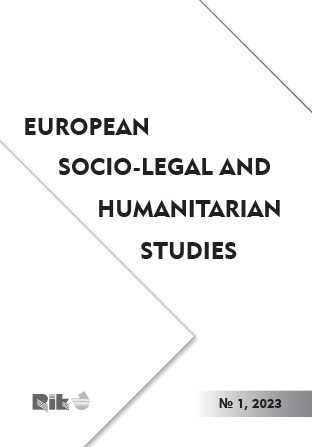HOME FOR PECULIAR CHILDREN AS A PLOT STRATEGY IN FANTASY METAGENRE OF THE FIRST DECADES OF THE XXI CENTURY
HOME FOR PECULIAR CHILDREN AS A PLOT STRATEGY IN FANTASY METAGENRE OF THE FIRST DECADES OF THE XXI CENTURY
Author(s): Andriy GurduzSubject(s): Comparative Study of Literature, Ukrainian Literature, Theory of Literature, American Literature
Published by: Editura U. T. Press
Keywords: fantasy; model; reception; paradigm; vector; typology;
Summary/Abstract: The active development of fantasy in the XXI century with a powerful self-rethinking within the metagenre contributes not only to the renewal of the subgenre spectrum of this literature, but also brings to the fore questions that were not investigated in the previous period due to their absence. Genre progression contributes to the formation of synthetic elements of image and plot systems, that can serve as ready-made structures in future fantasy modeling. The synthetic plot model “home for peculiar children” is outlined in some fantasy works of the late XXI century in a very aspectual way, but takes shape in 2010–2020s. In our article we define for the first time the plot model “home for peculiar children” as a recurring stable plot element in fantasy prose of the of the XXI century. We also characterize the main artistic parameters of this plot link and the possible ideological and thematic vectors of its metaphor in representative texts of the contemporary metagenre. The semantic core of the plot model or strategy, that we describe, is a kind of collective hero, presented in a number of synonymous images according to a certain criterion. These images motivatedly concentrated in a certain local spaces with or without an accompanying time limiter. The actual “home for peculiars” in the artistic works can be a literal object, a place dreamed by the characters, to which they are heading, or a metaphorical image. The possible ideological and thematic vectors of the metaphor of the plot-figurative construct “home for peculiar children” are determined based on its artistic valence. At the same time, this valence of the model can be expanded by the imperative laid down by the author in his book In “Miss Peregrine’s Home for Peculiar Children” by R. Riggs the model “home” is a temporary shelter for Jewish children during the Second World War, which in a literal and metaphorical sense is a plot attribute of the entire story. The destruction of the Home for peculiar children here (but also its finding in the final part) can also be seen as a metaphor in the context of Jewish history. In A. Zakordonets’ trilogy about Hran we find an original and nationally reinterpreted fragmentary borrowing of material from the cycle “Miss Peregrine’s Home for Peculiar Children” by R. Riggs for the first time. National memory is also a priority oncept in this Ukrainian artistic work. In M. Petrosyan’s “The House in Which…”, the pupils of the boarding school, protected from the “outside”, experience the subjective time of their House and can transit to the irrational world; many of them also have unusual abilities. The building of the House, that was ruined, metaphorizes the image of the Soviet Union. The ideological and thematic vector of “The House in the Cerulean Sea” by T. J. Klune is significantly different. We can see the ideas of associated with the possibility of an individual to choose sexual orientation here. Unlike the children of Miss Peregrine in R. Riggs’ hexalogy or the pupils by M. Petrosyan, who, despite all their differences, are the same within their community, the children of Klune’s House do not belong to the human race. The principles of good and evil are reinterpreted here from the point of view of the ethics of evaluation. The analyzed novels by R. Riggs, M. Petrosyan, and T. J. Klune, as well as by A. Zakordonets are examples of the variable ideological and content meaning of the model we identified – from national to sexually marked.
Journal: European Socio-Legal and Humanitarian Studies
- Issue Year: 2023
- Issue No: 1
- Page Range: 37-46
- Page Count: 10
- Language: English

